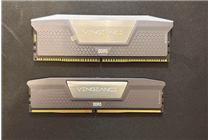The Future of Autonomous Vehicles: Driverless Cars Are on the Horizon
Summary:
- In the next 3-5 years, vehicles without driver’s seats are expected to become a reality, targeting specific applications such as ride-hailing and logistics.
- The advancement of computing power in AI technologies is set to surpass human brain capabilities, paving the way for efficient autonomous driving systems.
- NavInfo’s next-generation assisted driving solutions are progressing towards mass production, with numerous innovative driving assistance functions.
The 2025 World Intelligent and Connected Vehicle Conference recently took place in Beijing, showcasing the rapid developments in autonomous vehicle technology. A key highlight was the assertion made by NavInfo CEO Cheng Peng, emphasizing an imminent shift towards cars that will not require driver seats. This revolutionary design aims to transform the landscape of transportation over the next few years.
Disruptive Innovations in Smart Driving
Cheng Peng projects that upcoming advancements in smart driving will lead to the cancellation of traditional steering wheels and brake pedals. While widespread adoption may not occur instantly, targeted applications in areas such as ride-hailing and logistics are anticipated to spearhead this shift. The traditional driving test may soon be deemed obsolete, as AI optimizes driving by handling it as repetitive labor.
The Rising Power of AI
The foundation of this transformation largely hinges on the rapid enhancement of sensors, computing power, and algorithms. Current estimations suggest that human brain processing capability stands at around 5,000 TOPS (trillions of operations per second). In contrast, leading edge chips from NVIDIA are currently achieving between 1,000 to 2,000 TOPS. This indicates a promising trajectory wherein chip computing power could eventually eclipse human capabilities within five years.
However, challenges remain, primarily concerning energy consumption. The future depends on achieving an economic balance—when the cost, efficiency, and energy consumption of autonomous driving systems reach critical thresholds, we can expect widespread implementation.
Advancements in NavInfo’s Technology
NavInfo has made strides in developing next-generation assisted driving systems, which were showcased during the conference. Their Horizon Journey® 6B chip has successfully passed through essential development phases, entering a stage of joint R&D for integrated parking systems. Mass production is projected for the second quarter of 2026, offering exciting innovations in the realm of assisted driving.
Key Features of the Next-Gen Driving Assistance System
The new driving assistance functionalities powered by a computing capability of 20 TOPS incorporate:
-
Enhanced Driving Assistance: This feature includes over 20 support mechanisms, effectively covering high-frequency driving scenarios such as lane and collision assistance.
-
Advanced Parking Assistance: With capabilities for automatic parking across various complex situations—ranging from standard parking spaces to mechanical systems—this feature enhances both accuracy and efficiency, making it a strong competitor in the automotive sector.
-
Upgradable High-Speed Pilot Features: The platform boasts high-speed functionalities that facilitate intelligent lane changes and other major driving maneuvers, enhancing driver safety and comfort.
- Real-time Data Monitoring and Backhaul: Optional components support driver status monitoring and real-time data integration to establish a secure data loop between vehicles and cloud systems, promoting enhanced safety measures.
The Path Ahead for Autonomous Vehicles
As we look to the next three to five years, the potential for driverless vehicles is not just a vision but an impending reality driven by technological advancements. With ongoing developments at companies like NavInfo, which are merging innovative software with robust hardware capabilities, the automobile industry is poised for a revolutionary change.
The transition towards autonomous driving will bring a host of benefits, particularly in high-demand fields like logistics and ride-hailing services. Moreover, as vehicles evolve into sophisticated transportation solutions devoid of traditional driving mechanisms, society must prepare for changes in regulations surrounding driving licenses and road safety.
In conclusion, the future of driving is being redefined at a rapid pace. As these advancements materialize, consumers can look forward to safer, more efficient modes of transportation that leverage the power of AI and innovative technologies. As we navigate this transformative era, the possibilities are both exciting and promising.









